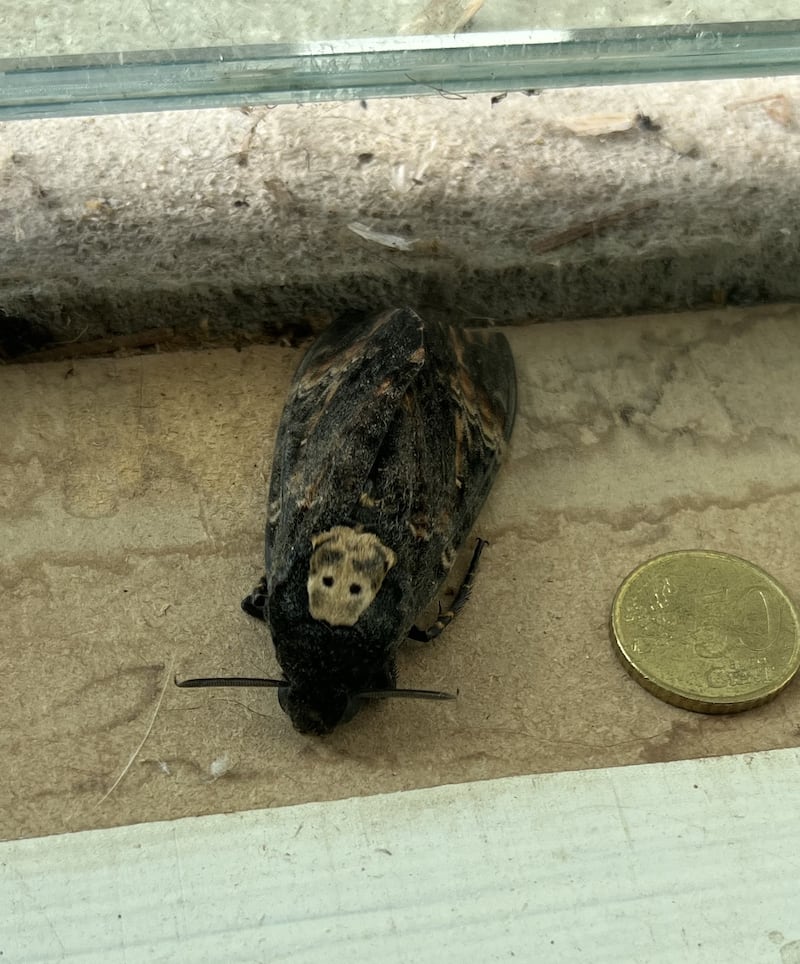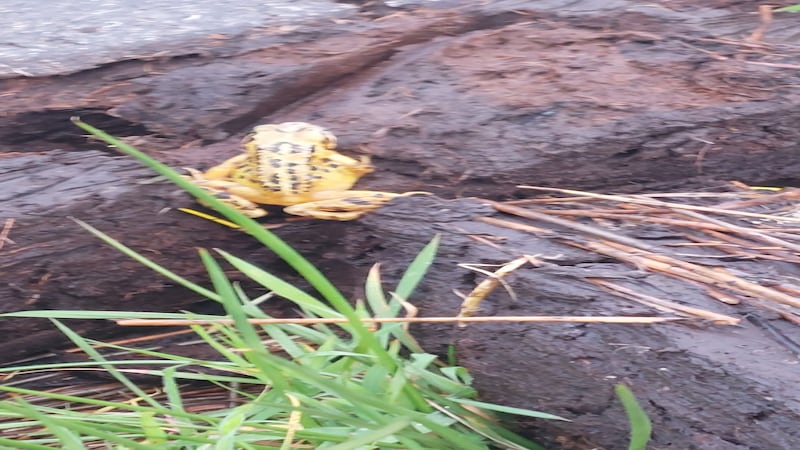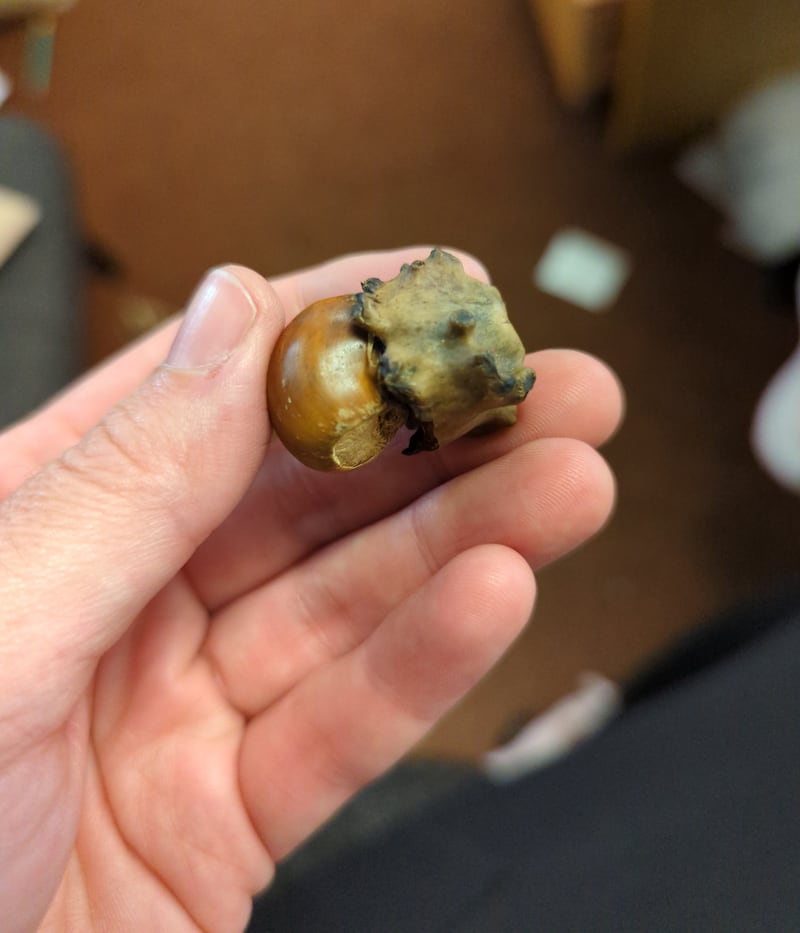I came across two of these fellows on the back wall of the house. They look unfamiliar. Can you identify?
Brian Cunningham, Dublin
There are lots of queries from readers who have these spiders in their gardens and maintain that they are huge and that they have never seen them before. This is the Garden spider, also called the Cross spider, because of the cross-like markings on its back. Females, at 15mm body size (the size of a thumbnail), are bigger than the males. They are native, spin huge orb webs outdoors at this time of year and are completely harmless unless you are a fly.

This monster was jammed between windows in the morning – and I was startled by it bouncing repeatedly off an upper window the night before, thinking it a small bat. My wife Karla thinks from online searching that it has a name to do with Africa, and my son Kierán (11) believes from familiarity with a book on bees that it eats them. What on earth is it – and what is it doing here?
Oisín Ó Conail, Wexford
You are all wrong. It is a Death’s Head hawk moth, so-called because of the skull-like markings on the body behind the head. It is our largest moth species, with a forewing of 60mm. It is a summer migrant here from Africa, persisting till the end of October. When disturbed it raises its head and front legs in threat posture and makes audible squeaks. It eats honey, not bees.

I’m curious whether this is actually a spider, I find the leg size in relation to the small body very unusual. Only ever visible on white painted surfaces in the garden at home.
Nigel Burgess
This is a harvestman called Dicranopalpus ramosus. While they belong to the same Arachnid class as spiders, harvestmen differ from them in having only one body part, as opposed to two in spiders, and only two eyes. Like spiders, they have eight legs and their second pair is always the longest, but they make neither venom nor silk web threads. They eat smaller invertebrates. This species has forked pedipalps (antennae).

This beautifully coloured frog appeared on Gregans Bog, high in the Burren. Is it a native frog or toad?
Frank Folan, Co Clare
It is our only native frog species, Rana temporaria. The colour of the skin is affected by the amount of moisture in the air and can vary from yellow to green, brown or in very wet weather, almost black. Our native toad is the Natterjack, which occurs on the Dingle peninsula.

A pupil brought a bag of these unusual acorn-looking tree nuts to school for the nature table, but we can’t identify them. Have you any idea what sort of tree they came from?
Mary O’Keeffe, Dublin
This is an acorn from our native pedunculate oak, Quercus robur, which has been afflicted with a knopper gall. It was caused by a tiny invasive wasp which laid its eggs last spring on the developing acorn. The grub overwinters in the disfigured acorn (which is now unable to germinate) and will emerge as an adult next spring. Destroy this if possible to prevent this pest of oak trees from spreading.

I came across this beetle in Newbridge Park, Donabate. When I tried to usher it to safety, two bright dots appeared on its very deep black abdomen! Once I left it alone, the dots disappeared! What is it?
John Daly, Dublin
It is the Devil’s Coach-horse beetle. When it feels threatened, it opens a pair of white glands on its abdomen, through which it can emit a foul-smelling odour. It puts them away afterwards.
Please submit your nature query, observation or photo with a location, via irishtimes.com/eyeonnature




